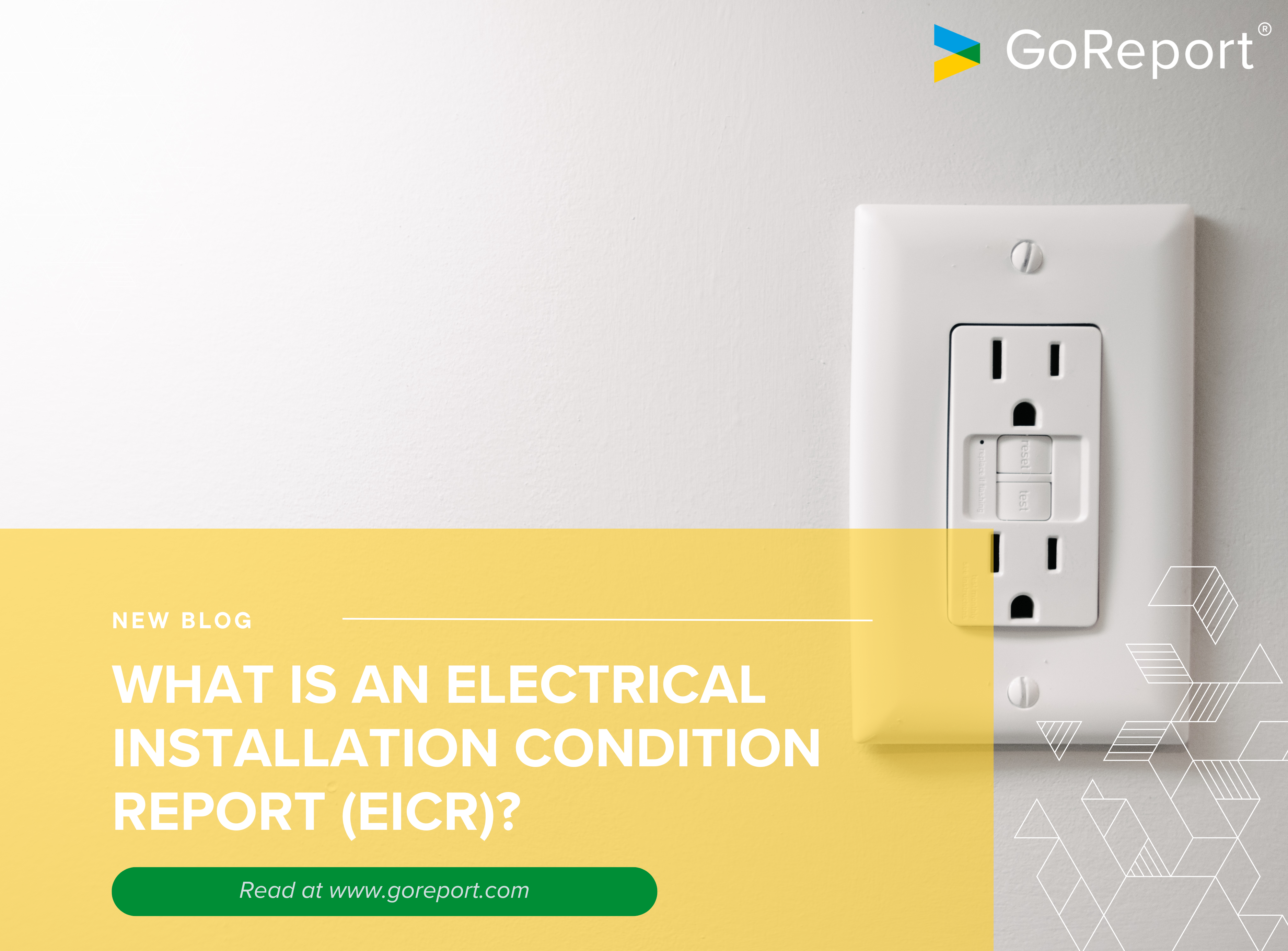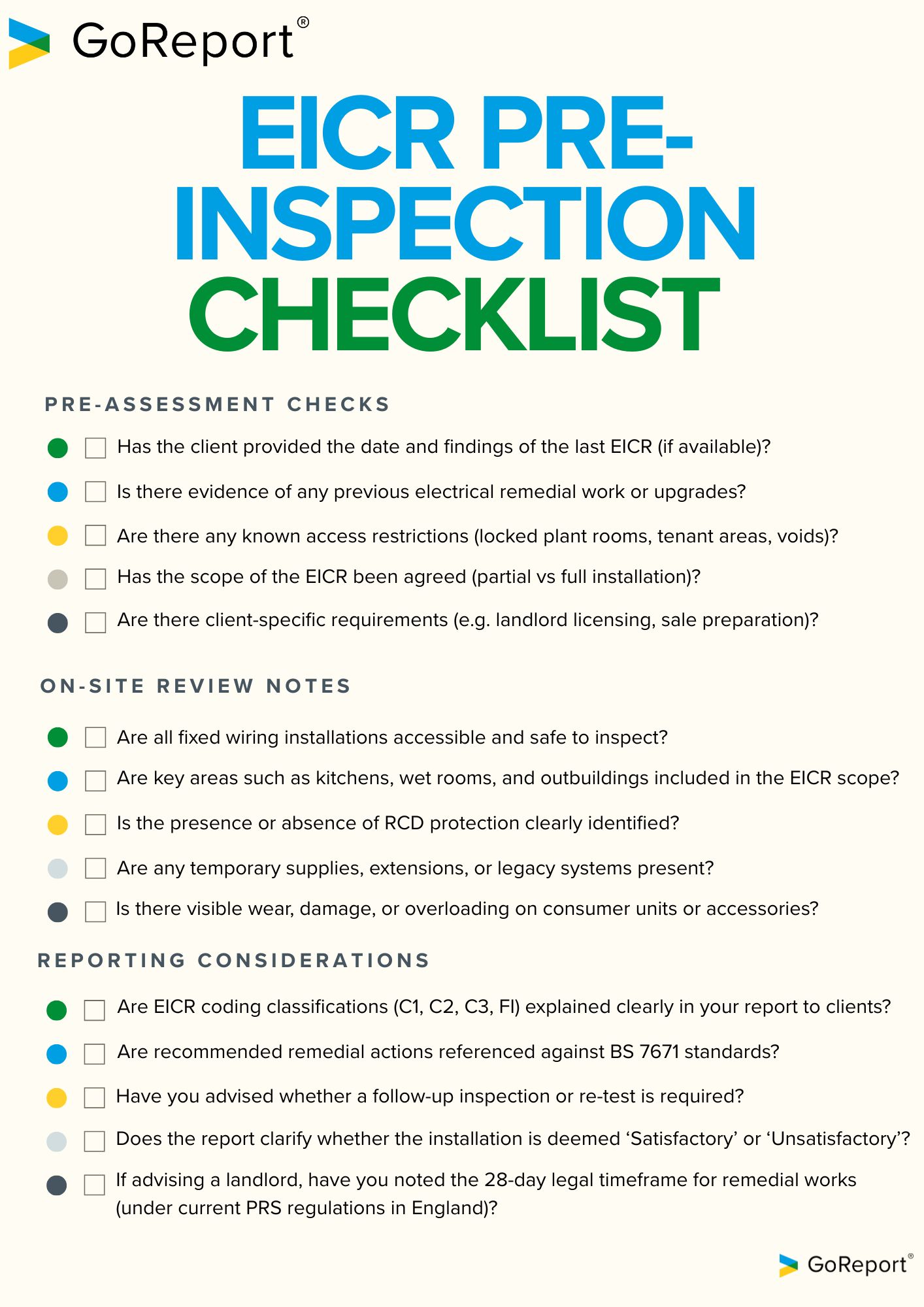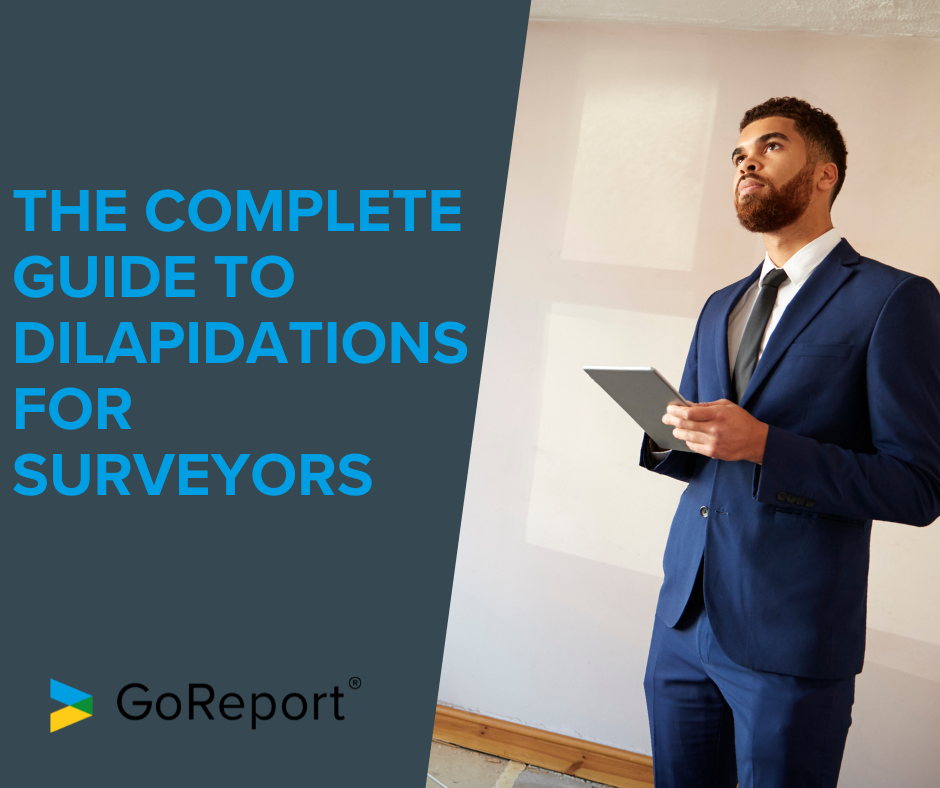What is a Electrical Installation Condition Report (EICR)?

For surveyors, landlords, and property professionals across the UK, an Electrical Installation Condition Report (EICR) is one of those documents that quietly does a lot of heavy lifting. At its core, it’s about safety, liability, and knowing what’s going on behind the walls before the lights start to flicker – or worse.
Whether you’re assessing a period flat in Leeds or a logistics unit on the edge of Milton Keynes, an up-to-date EICR helps reassure insurers, meet legal obligations, and prevent the kind of electrical issues that don’t announce themselves until they’re urgent. In short: it’s a small step that can prevent big problems.
In this article, we’ll break down what an EICR actually is, who needs one, how often they’re required, and what surveyors and property owners alike should watch out for. We’ll also cover legal responsibilities, real-world scenarios, and offer a free downloadable checklist to help you prepare before an inspection even starts. If you’ve ever been asked, “Do I really need one of those?”, this is your go-to guide.
Contents: What We’ll Cover
- What Is an EICR?
- What’s Included in an EICR?
- Who Needs an EICR (and When)?
- EICRs and the Law: What’s Legally Required in the UK?
- EICR Codes Explained (C1, C2, C3, FI)
- Who Can Carry Out an EICR?
- How Much Does an EICR Cost?
- How Long Is an EICR Valid For?
- Why EICRs Matter for Surveyors
- Common Misconceptions (and What You Should Tell Clients)
- Free EICR Checklist
- FAQs
What Is an EICR?
An Electrical Installation Condition Report (EICR) is a formal document produced following an assessment of the fixed electrical systems within a property. It assesses the safety, wear and tear, and overall condition of electrical installations, including sockets, wiring, consumer units (fuse boxes), light fittings, and protective bonding.
An EICR highlights any potential fire risks, electric shock hazards, or signs of electrical deterioration that could pose a serious danger.
Put simply: It tells you whether the electrics are safe.
For surveyors, it often forms part of pre-purchase reports, landlord compliance checks, or even portfolio-wide safety audits.
What’s Included in an EICR?
You might think of an EICR like an MOT for a building’s electrics. But unlike an MOT, it’s not just a pass/fail, it’s more nuanced. Here’s what it usually includes:
- Visual Inspection – Looking for obvious signs of damage or wear
- Testing of Circuits – Using specialist equipment to check insulation resistance, polarity, and earth fault loop impedance
- Verification of Earthing & Bonding – Ensuring key safety measures are in place
- Check of Distribution Board – Verifying correct circuit protection and labelling
- Identification of Non-Compliances – Highlighting anything that breaches the 18th Edition of the IET Wiring Regulations (BS 7671)
- Issuing of Coded Observations – More on that in a bit
The final report will state whether the installation is Satisfactory or Unsatisfactory, with reasons and supporting evidence.
For landlords, this can affect whether a property is legally rentable. For commercial owners, it can be the difference between being insured… and not. And for surveyors? It’s a clear-cut tool to flag real, physical risk.
Who Needs an EICR (and When)?
Residential property landlords in England are legally required to obtain an EICR every five years or on a change of tenancy (whichever comes first). Homeowners aren’t legally required to get one, but if they’re selling or experiencing persistent electrical issues, it’s a wise move.
Offices, shops, industrial units and public buildings are all recommended to have an EICR at least every five years, depending on usage and risk profile. Insurance policies often ask for a current EICR before renewal.
More frequent inspections may be needed for special environments such as schools and hospitals, typically every 1 to 3 years, due to higher risk levels.
And yes, surveyors are often the first people to point out that one’s overdue.
EICRs and the Law: What’s Legally Required in the UK?
The rules aren’t always black and white, especially when they vary across England, Scotland, and Wales.
But here’s the legal gist:
- England: Private landlords must provide tenants with a valid EICR and rectify any faults within 28 days (Electrical Safety Standards in the Private Rented Sector Regulations 2020).
- Scotland: EICRs have been mandatory in private rentals since 2015.
- Wales: Following the Renting Homes (Wales) Act 2016, similar standards are being enforced.
Failure to comply can lead to fines up to £30,000, and potentially invalidated insurance if something goes wrong.
EICR Codes Explained (C1, C2, C3, FI)
You’ve probably seen these codes in reports, but they can confuse even experienced property professionals if not explained clearly.
Here’s what they mean:
- C1 (Danger Present): Immediate risk – requires urgent action.
- C2 (Potentially Dangerous): Not immediately lethal but still a serious issue.
- C3 (Improvement Recommended): Doesn’t breach regulations, but upgrading is advised.
- FI (Further Investigation): Something’s not right, but more info is needed to pinpoint the issue.
Only a report with no C1 or C2 observations can be marked “Satisfactory.” C3s don’t fail the report, but smart landlords often address them to avoid future problems.
Who Can Carry Out an EICR?
An EICR must be carried out by a qualified, competent electrician who is usually a member of a recognised body such as:
- NICEIC (National Inspection Council for Electrical Installation Contracting)
- NAPIT (National Association of Professional Inspectors and Testers)
- ELECSA (now part of Certsure under NICEIC)
They need to be up to date with BS 7671 (18th Edition) and have experience testing complex systems safely.
How Much Does an EICR Cost?
That depends on the size and type of property and who’s carrying it out.
Typical Price Range:
- 1-bed flat: £120–£180
- 3-bed house: £180–£250
- Commercial units: £250–£600+ depending on size and circuits
Prices often include testing and the report, but not always remedial work. Worth noting: some cheap quotes skip corners. Always check what’s included.
There’s no one-size-fits-all answer, but these are general guidelines:
- Domestic Rental Properties: Every 5 years
- Commercial Properties: Every 5 years (or sooner if high risk)
- Special Installations (e.g. swimming pools): Often every 1-3 years
- Homeowners: Every 10 years is recommended, though not required
Events like flooding, major renovations, or a change in building use can trigger the need for a new EICR, too.
Why EICRs Matter for Surveyors
For surveyors, whether residential or commercial, EICRs are more than just a legal formality. They’re part of the bigger picture when it comes to:
- Client protection – Flagging unseen safety risks
- Technical due diligence – Supporting lending, acquisition, or sale
- Contractor accountability – Identifying sub-par installations
- Portfolio risk management – Especially for landlords with multiple properties
They also offer you an opportunity to educate your client. Many don’t realise that the building’s electrics could be decades out of date, even if the lights still turn on.
Common Misconceptions (and What You Should Tell Clients)
Here’s where surveyors often have to set the record straight:
- “The electrics look fine.”
Looks aren’t everything. Many faults are hidden inside walls or consumer units. - “I just had a new fuse board fitted, isn’t that enough?”
Not if the rest of the wiring is decades old. - “I rent to friends/family, do I still need one?”
Yes. The law doesn’t care who’s renting. - “I’ve got a certificate from 2009.”
That’s now obsolete. It needs to meet current standards (18th Edition).
The conversation can be awkward, but it’s worth having.
Downloadable Checlist

Download the ECIR checklist here.
GoReport can save you hours of admin without cutting corners on compliance. Our purpose-built digital surveying tools help you capture, complete, and deliver reports faster, more accurately, and with far less duplication. Start with a free demo today.
Frequently Asked Questions: EICR
What is an EICR?
An Electrical Installation Condition Report is a professional assessment of a building’s fixed electrical system, designed to identify safety issues, deterioration, and compliance with current regulations.
What does an EICR check?
It checks the condition of wiring, consumer units, sockets, switches, bonding, and more. It includes testing and visual inspection.
Is an EICR a legal requirement?
Yes, in many cases, particularly for landlords in England, Wales, and Scotland. It’s also often required for insurance and compliance in commercial settings.
How long does an EICR take?
Anywhere from one hour (for a small flat) to a full day (for larger or commercial properties).
What happens if an EICR is unsatisfactory?
You’ll need to carry out remedial work – often within 28 days – and may need to provide written confirmation to tenants or local authorities.







